 Search by Keyword
Sign Up Below for our MONTHLY BEATLES TRIVIA QUIZ!
|
"EVERY LITTLE THING"
(John Lennon - Paul McCartney)
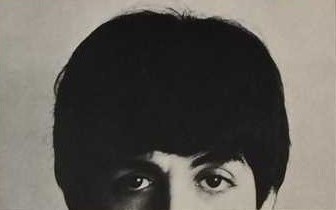 If ever there was a Beatles track that could be described as being "more than meets the eye," it would be "Every Little Thing." While almost all sources praise the song, it comes across as somewhat of a "sleeper" on both the British and American albums that contain it. The song's authors, in retrospect, have never spoken of it with much pride either. But upon examination we see that there is an understated beauty to the melody and conviction in their delivery of the lyrics. If ever there was a Beatles track that could be described as being "more than meets the eye," it would be "Every Little Thing." While almost all sources praise the song, it comes across as somewhat of a "sleeper" on both the British and American albums that contain it. The song's authors, in retrospect, have never spoken of it with much pride either. But upon examination we see that there is an understated beauty to the melody and conviction in their delivery of the lyrics.
 What we also see is that there is a good degree of uncertainty as to many of the basic elements that make up this track. Lennon appears to have the dominant presence in the song, but can this be viewed as a "John song"? Is John singing double-tracked lead vocals during the verses, or is he singing in unison with Paul, thereby sharing lead vocals? You can definitely hear a Rickenbacker 12-string guitar being played as the lead instrument, but can we assume that George Harrison is playing it? McCartney's book "Many Years From Now" states that the song was written at Jane Asher's home on Wimpole Street, but do all the sources agree with this? What we also see is that there is a good degree of uncertainty as to many of the basic elements that make up this track. Lennon appears to have the dominant presence in the song, but can this be viewed as a "John song"? Is John singing double-tracked lead vocals during the verses, or is he singing in unison with Paul, thereby sharing lead vocals? You can definitely hear a Rickenbacker 12-string guitar being played as the lead instrument, but can we assume that George Harrison is playing it? McCartney's book "Many Years From Now" states that the song was written at Jane Asher's home on Wimpole Street, but do all the sources agree with this?
The fact of the matter is, if you think you already know "every little thing" there is to know about this song, you might be surprised to find out the truth!
Songwriting History
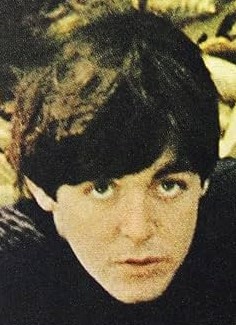 "John and I got this one written in Atlantic City during our last tour of the States." This is a quote from Paul McCartney in late 1964 around the time the British album "Beatles For Sale" was released. This would specifically date the song as being written within a three day period of August 30th and September 1st, as this was a short rest period for the band in between the two legs of their hectic 1964 American tour. Another album track, "What You're Doing," was also written during this short break. "John and I got this one written in Atlantic City during our last tour of the States." This is a quote from Paul McCartney in late 1964 around the time the British album "Beatles For Sale" was released. This would specifically date the song as being written within a three day period of August 30th and September 1st, as this was a short rest period for the band in between the two legs of their hectic 1964 American tour. Another album track, "What You're Doing," was also written during this short break.
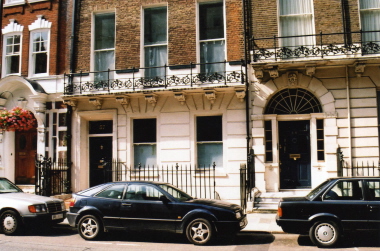 However, this information is in direct contradiction to what is stated in Paul's book "Many Years From Now," as mentioned above. In two different sections of the book, co-author Barry Miles mentions the song being written at the Asher home at 57 Wimpole St. where Paul had taken up residence, as he was dating daughter Jane Asher. Unfortunately, there is inconsistency that can be seen right away. The first reference to the song states that it was written in the "little music room" where many other Beatles songs were written (including "I Want To Hold Your Hand"). The second reference to the song suggests that Paul wrote it "sitting in his garret room alone, strumming his guitar." However, this information is in direct contradiction to what is stated in Paul's book "Many Years From Now," as mentioned above. In two different sections of the book, co-author Barry Miles mentions the song being written at the Asher home at 57 Wimpole St. where Paul had taken up residence, as he was dating daughter Jane Asher. Unfortunately, there is inconsistency that can be seen right away. The first reference to the song states that it was written in the "little music room" where many other Beatles songs were written (including "I Want To Hold Your Hand"). The second reference to the song suggests that Paul wrote it "sitting in his garret room alone, strumming his guitar."
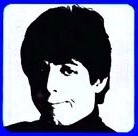 What we also have to keep in mind is that time fades memory. While Paul most likely included "Every Little Thing" amongst many songs he told Barry Miles was written at the Asher home, this recollection was approximately 30 years after the fact. Therefore, our most reliable source in determining when and where the song was written is Paul's quote from 1964, the year the song was released. What we also have to keep in mind is that time fades memory. While Paul most likely included "Every Little Thing" amongst many songs he told Barry Miles was written at the Asher home, this recollection was approximately 30 years after the fact. Therefore, our most reliable source in determining when and where the song was written is Paul's quote from 1964, the year the song was released.
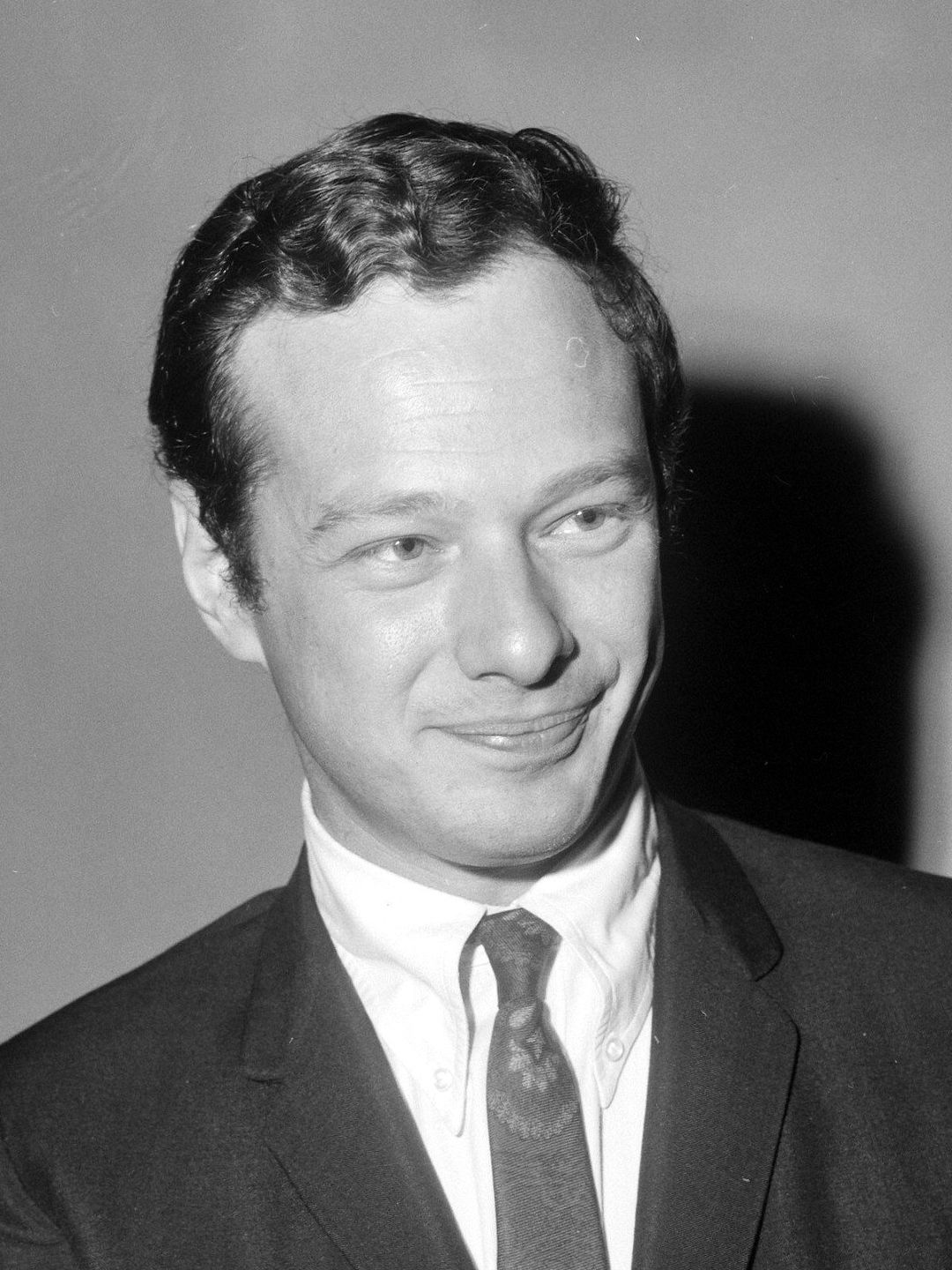 However, Paul did draw a connection to The Beatles 1964 American tour when he spoke about the song in 1994. "I remember playing it for Brian (Epstein) backstage somewhere. He had assembled a few people. It was one of those meetings - 'Oh, we have to do some recordings, who's got what?' and we played a few at Brian. We didn't often check things with Brian, in fact I just remember it in connection with this because I thought it was very catchy. I played it amongst a few songs; it was something I thought was quite good." However, Paul did draw a connection to The Beatles 1964 American tour when he spoke about the song in 1994. "I remember playing it for Brian (Epstein) backstage somewhere. He had assembled a few people. It was one of those meetings - 'Oh, we have to do some recordings, who's got what?' and we played a few at Brian. We didn't often check things with Brian, in fact I just remember it in connection with this because I thought it was very catchy. I played it amongst a few songs; it was something I thought was quite good."
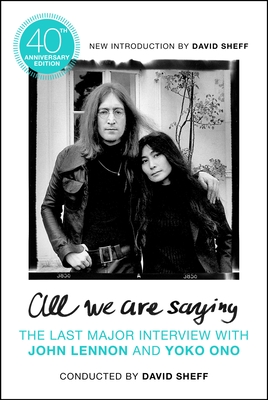 As for who was the primary writer, the impression upon listening to the track is that John dominates. But this turns out to not be true. "'Every Little Thing' is his song. Maybe I threw in something," was John's comment in 1980 to David Sheff in his book "All We Are Saying." Paul's further 1994 comments about the song sounds as if this was the case as well. He states, "'Every Little Thing,' like most of the stuff I did, was my attempt at the next single...but it became an album filler rather than the great almighty single. It didn't have quite what was required." As for who was the primary writer, the impression upon listening to the track is that John dominates. But this turns out to not be true. "'Every Little Thing' is his song. Maybe I threw in something," was John's comment in 1980 to David Sheff in his book "All We Are Saying." Paul's further 1994 comments about the song sounds as if this was the case as well. He states, "'Every Little Thing,' like most of the stuff I did, was my attempt at the next single...but it became an album filler rather than the great almighty single. It didn't have quite what was required."
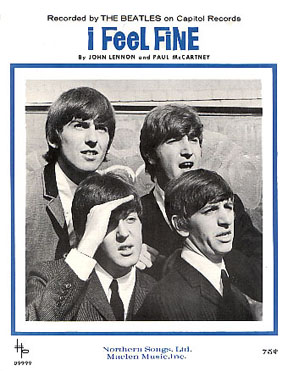 This comment also adds the interesting detail that Paul originally had this song in mind as the next single, which would have been the British follow-up to the hugely successful song "A Hard Day's Night." While this didn't occur, there was much debate during the recording of the "Beatles For Sale" album as to what the next single was going to be. After many contenders were dismissed (including "Eight Days A Week"), John's "I Feel Fine" apparently had "what was required." This comment also adds the interesting detail that Paul originally had this song in mind as the next single, which would have been the British follow-up to the hugely successful song "A Hard Day's Night." While this didn't occur, there was much debate during the recording of the "Beatles For Sale" album as to what the next single was going to be. After many contenders were dismissed (including "Eight Days A Week"), John's "I Feel Fine" apparently had "what was required."
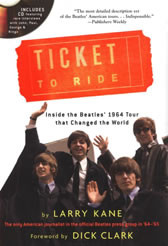 Although it has never been officially confirmed by Paul, many sources speculate that "Every Little Thing" was inspired by his ongoing relationship with Jane Asher. Since this three-day break of the tour in Atlantic City also included The Beatles experience with prostitutes, as documented in Larry Kane's book "Ticket To Ride" (see "What You're Doing"), one can easily see how these recent infidelities may have triggered lyrics about what a "lucky guy" he is to have Jane Asher waiting for him at home. Although it has never been officially confirmed by Paul, many sources speculate that "Every Little Thing" was inspired by his ongoing relationship with Jane Asher. Since this three-day break of the tour in Atlantic City also included The Beatles experience with prostitutes, as documented in Larry Kane's book "Ticket To Ride" (see "What You're Doing"), one can easily see how these recent infidelities may have triggered lyrics about what a "lucky guy" he is to have Jane Asher waiting for him at home.
Recording History
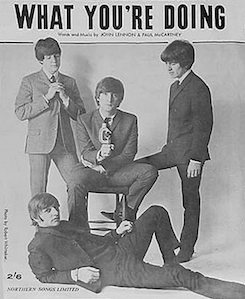 After nearly a month and a half absence from the recording studio, The Beatles entered EMI Studio Two on September 29th, 1964 for their third session to complete what became their "Beatles For Sale" album. Both of the songs that were written in Atlantic City a month earlier were started on this day, namely "What You're Doing" and "Every Little Thing." Another song written during this American tour, "I Don't Want To Spoil The Party," was completely recorded on this day, but both Atlantic City songs were improved upon at later dates. After nearly a month and a half absence from the recording studio, The Beatles entered EMI Studio Two on September 29th, 1964 for their third session to complete what became their "Beatles For Sale" album. Both of the songs that were written in Atlantic City a month earlier were started on this day, namely "What You're Doing" and "Every Little Thing." Another song written during this American tour, "I Don't Want To Spoil The Party," was completely recorded on this day, but both Atlantic City songs were improved upon at later dates.
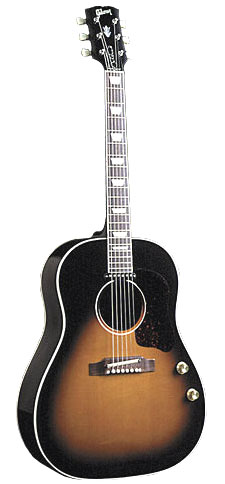 "Every Little Thing" was the first composition tackled on this day, probably because they had high hopes for it being their next single. After four live takes, "take four" was deemed the best and was subjected to at least one overdub (double-tracking the lead guitar) and was set aside for later. As for who played what, Paul continued his comments on this session in the above mentioned 1964 interview: He stated: "John does the guitar riff for this one, and George is on acoustic." Therefore John and George decided to switch out their usual roles for this song, Harrison playing the standard acoustic guitar for Beatles recordings at the time, a Gibson "Jumbo" J-160E. "Every Little Thing" was the first composition tackled on this day, probably because they had high hopes for it being their next single. After four live takes, "take four" was deemed the best and was subjected to at least one overdub (double-tracking the lead guitar) and was set aside for later. As for who played what, Paul continued his comments on this session in the above mentioned 1964 interview: He stated: "John does the guitar riff for this one, and George is on acoustic." Therefore John and George decided to switch out their usual roles for this song, Harrison playing the standard acoustic guitar for Beatles recordings at the time, a Gibson "Jumbo" J-160E.
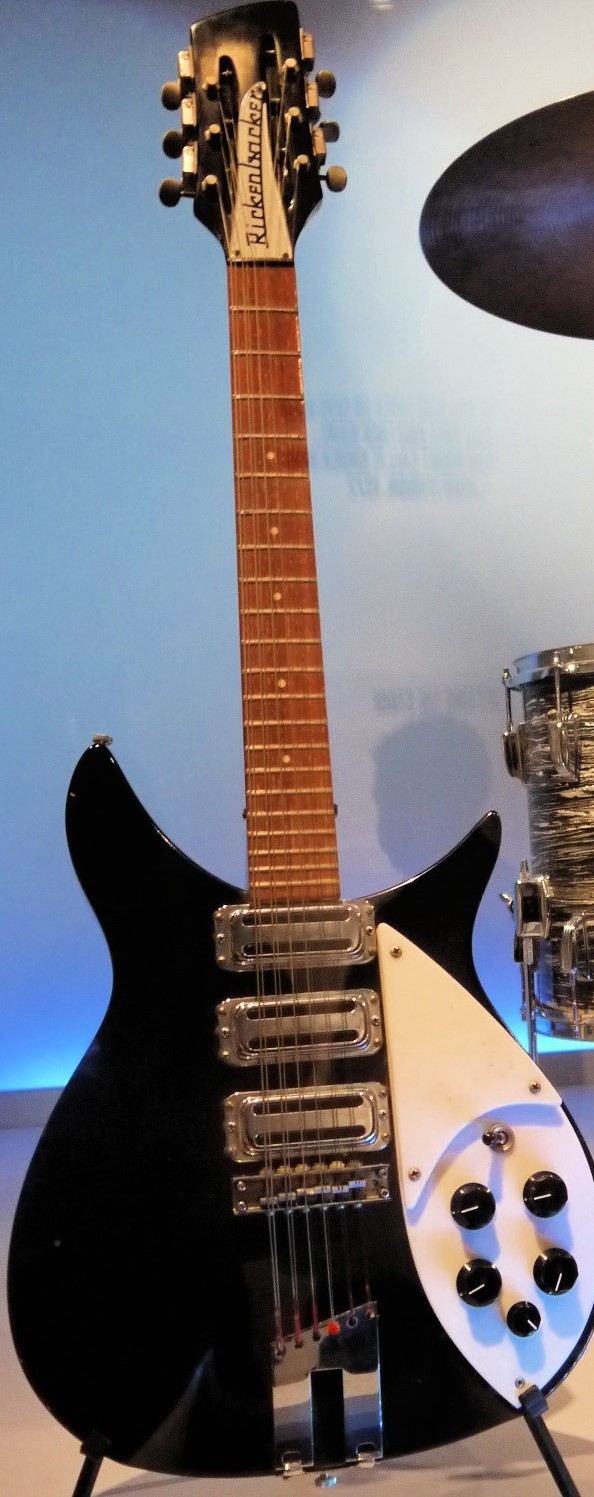 The guitar used by John appears to be a Rickenbacker 12-string as heard many times that year played by George, although its tone sounds somewhat different. This is probably explained by John finally getting some use out of his 1964 Rickenbacker 325-12 that he had in the studio from mid 1964 but sparingly, if ever, used. (He reportedly sent it back because it was "impossible to keep in tune.") The sound of this guitar is noticeably different than George's 1963 Rickenbacker 360/12 which we've heard throughout the year, such as on "I Should Have Known Better" and "If I Fell" among other songs. The guitar used by John appears to be a Rickenbacker 12-string as heard many times that year played by George, although its tone sounds somewhat different. This is probably explained by John finally getting some use out of his 1964 Rickenbacker 325-12 that he had in the studio from mid 1964 but sparingly, if ever, used. (He reportedly sent it back because it was "impossible to keep in tune.") The sound of this guitar is noticeably different than George's 1963 Rickenbacker 360/12 which we've heard throughout the year, such as on "I Should Have Known Better" and "If I Fell" among other songs.
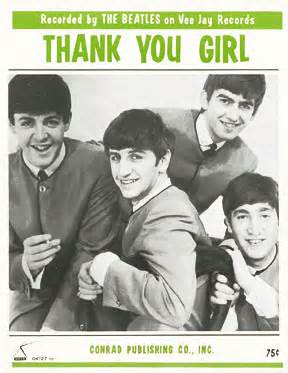 Some interesting ingredients appearing in this early version of "Every Little Thing" include John adding a good amount of extra guitar fills in between the vocal phrases of the verses unlike what we hear in the final version. John's guitar solo, while quite similar to what we have become familiar with, ends with a different melodic pattern while incorporating a similar triplet style. Even though double-tracking their lead vocals was becoming the norm by late 1964, unison singing by John and Paul appears here, which was common throughout the early Beatles career, as evidenced in "Thank You Girl," "She Loves You," "I'll Get You" and even "I Want To Hold Your Hand" to name a few. McCartney even pops into harmony sporadically on different lines during the verses, this being omitted at their next session. Some interesting ingredients appearing in this early version of "Every Little Thing" include John adding a good amount of extra guitar fills in between the vocal phrases of the verses unlike what we hear in the final version. John's guitar solo, while quite similar to what we have become familiar with, ends with a different melodic pattern while incorporating a similar triplet style. Even though double-tracking their lead vocals was becoming the norm by late 1964, unison singing by John and Paul appears here, which was common throughout the early Beatles career, as evidenced in "Thank You Girl," "She Loves You," "I'll Get You" and even "I Want To Hold Your Hand" to name a few. McCartney even pops into harmony sporadically on different lines during the verses, this being omitted at their next session.
 However, by the time the next day arrived, a decision was made to start the song all over again. They entered EMI Studio Two at 2:30 pm on September 30th, 1964 for a three-hour recording session focused solely on re-recording "Every Little Thing." This session was described by Mark Lewisohn in his 1988 book "The Beatles Recording Sessions" as "a fun recording." It was decided that John would perform his lead guitar parts as an overdub, so they tapped out a count-in to start off the song with someone quietly whistling the introductory guitar riff as a guide for John's later overdub. (The tapping and whistling can be quietly heard at the start of "take six" and "take seven," not to mention also appearing in the left channel of the stereo mix on the released song.) However, by the time the next day arrived, a decision was made to start the song all over again. They entered EMI Studio Two at 2:30 pm on September 30th, 1964 for a three-hour recording session focused solely on re-recording "Every Little Thing." This session was described by Mark Lewisohn in his 1988 book "The Beatles Recording Sessions" as "a fun recording." It was decided that John would perform his lead guitar parts as an overdub, so they tapped out a count-in to start off the song with someone quietly whistling the introductory guitar riff as a guide for John's later overdub. (The tapping and whistling can be quietly heard at the start of "take six" and "take seven," not to mention also appearing in the left channel of the stereo mix on the released song.)
 George's acoustic guitar, Paul's bass and Ringo's drums were recorded onto track one of the four-track tape, while John and Paul's vocals, sung with both vocalists facing each other at a single microphone, recorded onto track trhee of the tape. "Take six" began with John stating "sure it shouldn't be like this, Norm", speaking to engineer Norman Smith about the microphone positioning between Paul and himself. After George Martin calls out for the recording of this take, Paul stops his bass noodling to exclaim, "Right, right, right!" George's acoustic guitar, Paul's bass and Ringo's drums were recorded onto track one of the four-track tape, while John and Paul's vocals, sung with both vocalists facing each other at a single microphone, recorded onto track trhee of the tape. "Take six" began with John stating "sure it shouldn't be like this, Norm", speaking to engineer Norman Smith about the microphone positioning between Paul and himself. After George Martin calls out for the recording of this take, Paul stops his bass noodling to exclaim, "Right, right, right!"
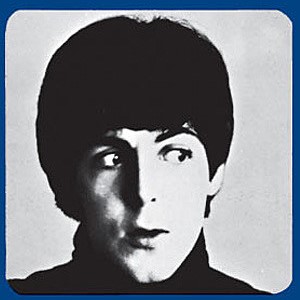 "Take six" made it through the first chorus but was then aborted because of Paul cutting out on the word "me." John asked, "Sorry, you choked?" to which Paul replied "No, I just burped actually!" Lennon then complained again to Norman Smith, "Norman, this isn't right, you know, because I can't, sort of, get near the mic to sing." After an adjustment is made, "take seven" is complete but unfortunately ended in uproarious laughter because of McCartney's higher harmony going off kilter, Ringo also mistakenly going back to the playing only the kick drum in the final verse as he does in the first half of each verse. Of the five new takes of the song recorded on this day, "take nine" was deemed the best. "Take six" made it through the first chorus but was then aborted because of Paul cutting out on the word "me." John asked, "Sorry, you choked?" to which Paul replied "No, I just burped actually!" Lennon then complained again to Norman Smith, "Norman, this isn't right, you know, because I can't, sort of, get near the mic to sing." After an adjustment is made, "take seven" is complete but unfortunately ended in uproarious laughter because of McCartney's higher harmony going off kilter, Ringo also mistakenly going back to the playing only the kick drum in the final verse as he does in the first half of each verse. Of the five new takes of the song recorded on this day, "take nine" was deemed the best.
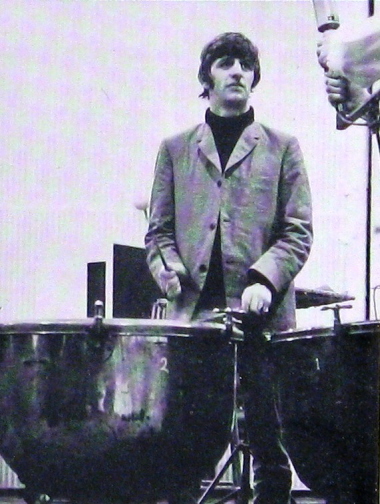 Onto "take nine," some overdubs were performed onto tracks two and four of the four-track tape. When John added his lead guitar parts, he eliminated most of the passages he played in the verses the day before and slightly re-worked the guitar solo in the instrumental section. "Ringo bashes some timpani drums for the big noises you hear," explains McCartney in the above mentioned 1964 interview. This overdub apparently was performed simultaneously with Paul playing low notes on the piano, as also heard during the verses. A picture of this overdub, with Ringo on timpani and Paul on piano, appears in the book "The Beatles Recording Sessions," which should debunk the myth that George Martin played the piano on this song. Paul also overdubbed two ascending bass lines during the instrumental section as well as some bass "thumping" during the conclusion of the song. Onto "take nine," some overdubs were performed onto tracks two and four of the four-track tape. When John added his lead guitar parts, he eliminated most of the passages he played in the verses the day before and slightly re-worked the guitar solo in the instrumental section. "Ringo bashes some timpani drums for the big noises you hear," explains McCartney in the above mentioned 1964 interview. This overdub apparently was performed simultaneously with Paul playing low notes on the piano, as also heard during the verses. A picture of this overdub, with Ringo on timpani and Paul on piano, appears in the book "The Beatles Recording Sessions," which should debunk the myth that George Martin played the piano on this song. Paul also overdubbed two ascending bass lines during the instrumental section as well as some bass "thumping" during the conclusion of the song.
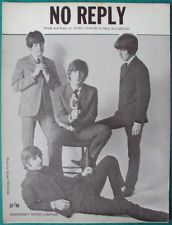 By 5:30 pm, the song was complete, which resulted in an hour break before returning to the studio to take another stab at "What You're Doing" and then recording "No Reply" in its entirety. Probably by the end of this session the decision was made that "Every Little Thing" didn't have what it took to be "the great almighty single," as Paul described it. This can be said because their song "No Reply" was the next to be considered for this slot. By 5:30 pm, the song was complete, which resulted in an hour break before returning to the studio to take another stab at "What You're Doing" and then recording "No Reply" in its entirety. Probably by the end of this session the decision was made that "Every Little Thing" didn't have what it took to be "the great almighty single," as Paul described it. This can be said because their song "No Reply" was the next to be considered for this slot.
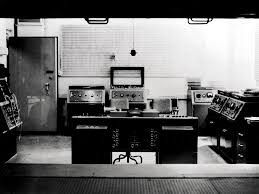 Both the stereo and mono mixes of "Every Little Thing" were created on October 27th, 1964, in the EMI Studio Two control room. George Martin and engineers Norman Smith and Ken Scott performed the all-important mono mix during the morning session on this day (from 10 am to 12:30 pm) while they quickly made the stereo mix with three other songs in a half-hour afternoon session (from 12:30 to 1 pm). They added a smattering of reverb to the vocals on both mixes, as well as performing an appropriate fade to the song. Both the stereo and mono mixes of "Every Little Thing" were created on October 27th, 1964, in the EMI Studio Two control room. George Martin and engineers Norman Smith and Ken Scott performed the all-important mono mix during the morning session on this day (from 10 am to 12:30 pm) while they quickly made the stereo mix with three other songs in a half-hour afternoon session (from 12:30 to 1 pm). They added a smattering of reverb to the vocals on both mixes, as well as performing an appropriate fade to the song.
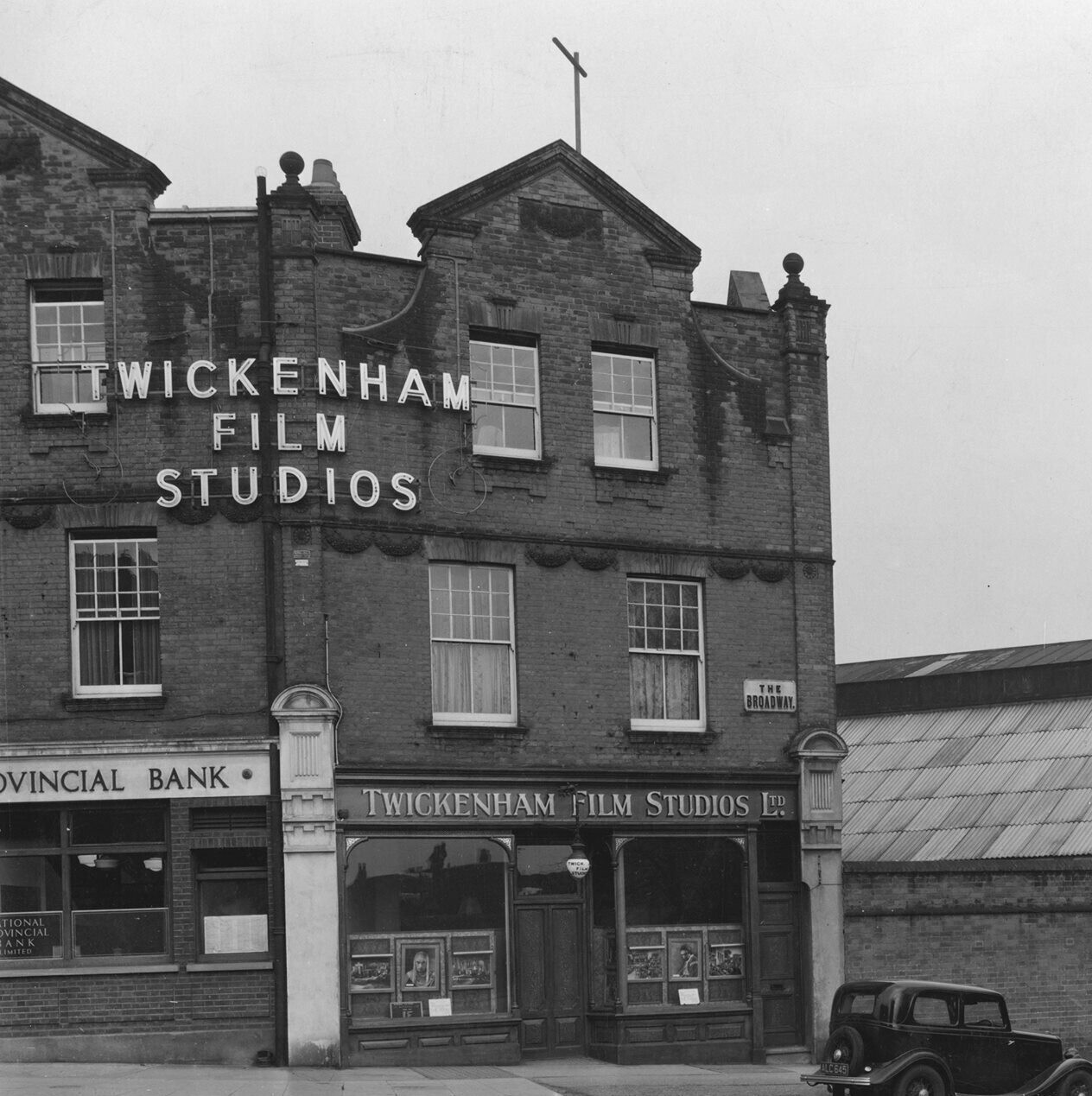 The Beatles did return to "Every Little Thing" on January 3rd, 1969 during the tense "Get Back / Let It Be" rehearsals at Twickenham Film Studios, this being a brief recollection of this song by George during considerations of which tracks to include in their proposed concert. When considering including some of their older material, George stated "I'll tell you which is a good one" and then performed the introductory guitar riff, which impelled Paul to join in for a quick impromptu version of the song. While this did not end up being included in the Apple rooftop show on January 30th, 1969, this conversation and small snippet of the song was included on the disc "Fly On The Wall" that was included with the "Let It Be...Naked" album of 2003. The Beatles did return to "Every Little Thing" on January 3rd, 1969 during the tense "Get Back / Let It Be" rehearsals at Twickenham Film Studios, this being a brief recollection of this song by George during considerations of which tracks to include in their proposed concert. When considering including some of their older material, George stated "I'll tell you which is a good one" and then performed the introductory guitar riff, which impelled Paul to join in for a quick impromptu version of the song. While this did not end up being included in the Apple rooftop show on January 30th, 1969, this conversation and small snippet of the song was included on the disc "Fly On The Wall" that was included with the "Let It Be...Naked" album of 2003.
 Sometime in 2025, producer Giles Martin, with engineers Joe Wyatt and Greg McAllister, created a mix of "take six" and "take seven" of "Every Little Thing" from the original EMI sessions for inclusion on "Anthology 4," this being released in various editions in 2025 as detailed below. Sometime in 2025, producer Giles Martin, with engineers Joe Wyatt and Greg McAllister, created a mix of "take six" and "take seven" of "Every Little Thing" from the original EMI sessions for inclusion on "Anthology 4," this being released in various editions in 2025 as detailed below.
Song Structure and Style
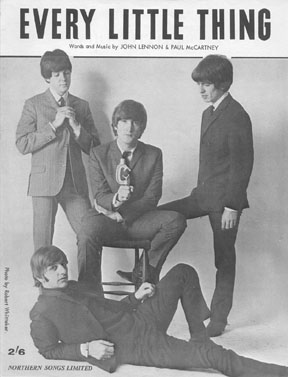 Although not typically in use by The Beatles up to this point, "Every Little Thing" brings in the use of the "chorus." The short verses are displayed in sets of two before each chorus (except for the solo section), which results in a 'verse/ verse/ chorus/ verse/ verse/ chorus/ solo/ chorus' format (or aabaabab structure). Since the solo is in the structural and melodic form of a verse, it's referred to above as such. A fitting introduction and conclusion (with fade-out) is included to round out the picture. Although not typically in use by The Beatles up to this point, "Every Little Thing" brings in the use of the "chorus." The short verses are displayed in sets of two before each chorus (except for the solo section), which results in a 'verse/ verse/ chorus/ verse/ verse/ chorus/ solo/ chorus' format (or aabaabab structure). Since the solo is in the structural and melodic form of a verse, it's referred to above as such. A fitting introduction and conclusion (with fade-out) is included to round out the picture.
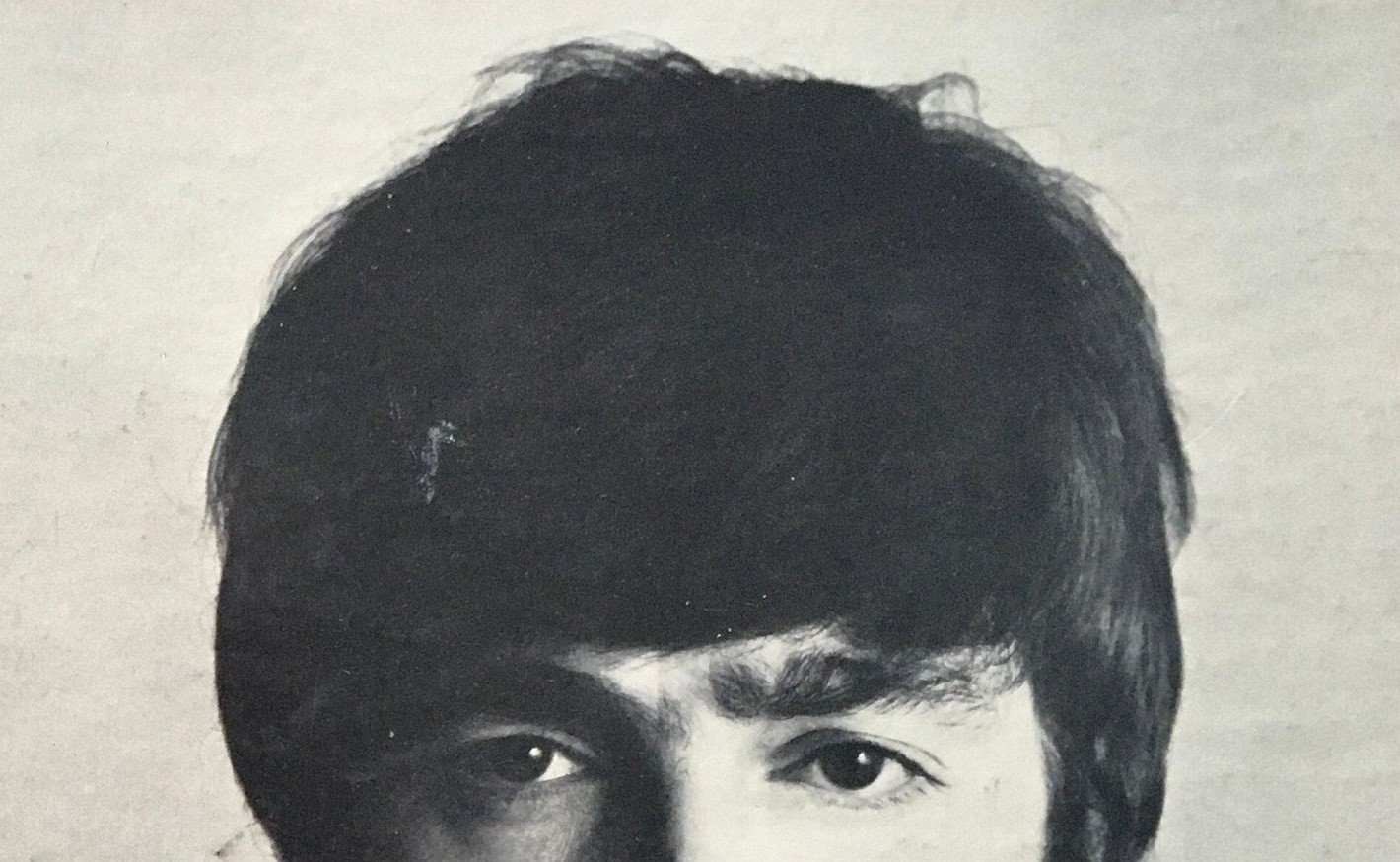 The two-measure introduction consists wholly of John's overdubbed guitar riff. It appears that the riff was just played while they performed the song in the first version they recorded on September 29th, 1964, but since it was problematic for John to play his lead guitar part and sing simultaneously, a decision was made to record his whole guitar performance afterward as an overdub. A similar solution was decided upon two and a half weeks later when he played lead guitar and sang lead vocals on "I Feel Fine," although in this later instance, he performed his vocals afterward as an overdub. In the case of "Every Little Thing," a tapped out beat (and a whistled version of the riff) was put in the rhythm track to make sure John's riff would be played in the proper place. The two-measure introduction consists wholly of John's overdubbed guitar riff. It appears that the riff was just played while they performed the song in the first version they recorded on September 29th, 1964, but since it was problematic for John to play his lead guitar part and sing simultaneously, a decision was made to record his whole guitar performance afterward as an overdub. A similar solution was decided upon two and a half weeks later when he played lead guitar and sang lead vocals on "I Feel Fine," although in this later instance, he performed his vocals afterward as an overdub. In the case of "Every Little Thing," a tapped out beat (and a whistled version of the riff) was put in the rhythm track to make sure John's riff would be played in the proper place.
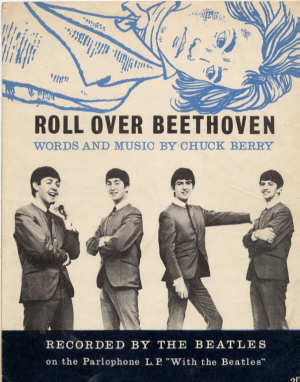 The cleverly played guitar riff, which is also heard in the solo and conclusion of the song, mimics the first melodic vocal phrase of the first verse. Since the phrase always begins on the two-beat of the measure, this results in the listener being thrown somewhat off-balance at the beginning of the song, thinking the down-beat is when the guitar starts. It's only when the first verse starts that we gain our bearings. Beatle fans are used to this as well, as evidenced in the disorienting openings to "I Want To Hold Your Hand" and "Roll Over Beethoven," for example. The cleverly played guitar riff, which is also heard in the solo and conclusion of the song, mimics the first melodic vocal phrase of the first verse. Since the phrase always begins on the two-beat of the measure, this results in the listener being thrown somewhat off-balance at the beginning of the song, thinking the down-beat is when the guitar starts. It's only when the first verse starts that we gain our bearings. Beatle fans are used to this as well, as evidenced in the disorienting openings to "I Want To Hold Your Hand" and "Roll Over Beethoven," for example.
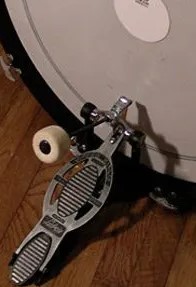 The first six-measure verse then begins, which hits home on the down-beat with George's rhythm guitar, Paul's bass note and Ringo's bass drum. Ringo actually stays primarily on the bass drum during this entire verse for a nice contrast to be heard later, this being more evidence of The Beatles' (and George Martin's) strict attention to detail. John and Paul sing the three melodic phrases of this verse in unison throughout, although John's distinctive voice is somewhat higher in the mix. This is what leads many to conclude that John is the lead singer and, therefore, the primary songwriter although, as revealed above, this is clearly not the case. The third melodic phrase is quite different from the first two, as it is sung mostly in triplets and in a higher pitch, as if to command attention and summarize the thoughts presented in the first two phrases. The first six-measure verse then begins, which hits home on the down-beat with George's rhythm guitar, Paul's bass note and Ringo's bass drum. Ringo actually stays primarily on the bass drum during this entire verse for a nice contrast to be heard later, this being more evidence of The Beatles' (and George Martin's) strict attention to detail. John and Paul sing the three melodic phrases of this verse in unison throughout, although John's distinctive voice is somewhat higher in the mix. This is what leads many to conclude that John is the lead singer and, therefore, the primary songwriter although, as revealed above, this is clearly not the case. The third melodic phrase is quite different from the first two, as it is sung mostly in triplets and in a higher pitch, as if to command attention and summarize the thoughts presented in the first two phrases.
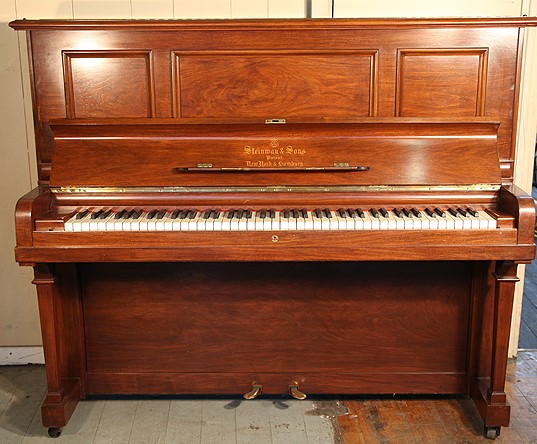 Another interesting feature of the verse is the appearance of the low bass notes of the piano in the fifth and sixth measures, which were overdubbed by Paul. This compensates for the absence of John's guitar phrases that appeared in the version recorded the day before, and adds a nice touch of finesse to the proceedings. Another interesting feature of the verse is the appearance of the low bass notes of the piano in the fifth and sixth measures, which were overdubbed by Paul. This compensates for the absence of John's guitar phrases that appeared in the version recorded the day before, and adds a nice touch of finesse to the proceedings.
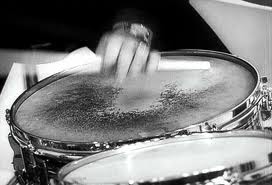 The second six-measure verse follows immediately and is structurally identical except for one addition. Ringo adds his snare drum beat in alternation with his bass drum beat, but no cymbals are being played at this time. At the end of the sixth measure, though, Ringo plays a simple drum fill to introduce the true focal point of the song, which is the chorus. The second six-measure verse follows immediately and is structurally identical except for one addition. Ringo adds his snare drum beat in alternation with his bass drum beat, but no cymbals are being played at this time. At the end of the sixth measure, though, Ringo plays a simple drum fill to introduce the true focal point of the song, which is the chorus.
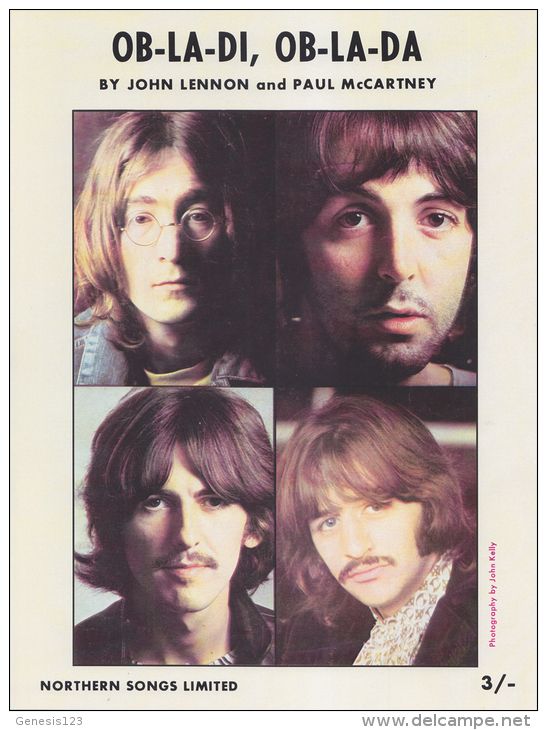 The chorus is a symmetrical eight measures long but has its share of eccentricities. For instance, the sustaining of the G chord in the 2nd, 3rd, 6th and 7th measure, with its doom-like timpani and piano bass notes, make it a mismatch with the typical "isn't it great to be in love" lyrics that the song contains. Just considering the unorthodox switching back and forth between A and G in this chorus makes it quite unusual. This is hardly the happy-go-lucky chorus we'll hear a few years later in "Ob-La-Di, Ob-La-Da"! The chorus is a symmetrical eight measures long but has its share of eccentricities. For instance, the sustaining of the G chord in the 2nd, 3rd, 6th and 7th measure, with its doom-like timpani and piano bass notes, make it a mismatch with the typical "isn't it great to be in love" lyrics that the song contains. Just considering the unorthodox switching back and forth between A and G in this chorus makes it quite unusual. This is hardly the happy-go-lucky chorus we'll hear a few years later in "Ob-La-Di, Ob-La-Da"!
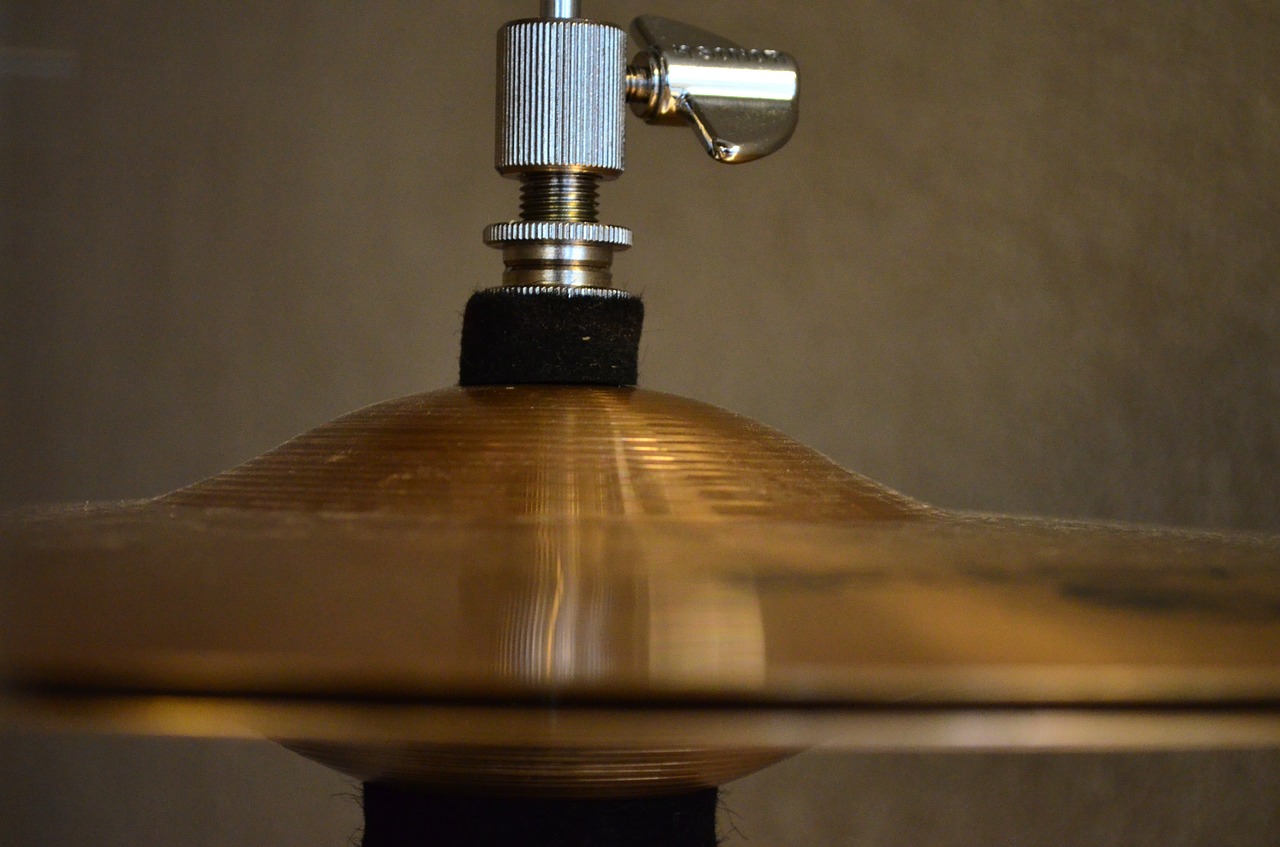 Nonetheless, the chorus is quite effective and stands out as the primary focal point of the song. There are many changes in the arrangement here as well, such as the reappearance of John's Rickenbacker 12-string overdub, which plays subtle accents that culminate in him playing along with the vocals at the end of each phrase (on the words "me, yeah" and "me, oooh"). The drums kick in with a full rock beat for the first time, together with Ringo's trademark sizzling hi-hat. Nonetheless, the chorus is quite effective and stands out as the primary focal point of the song. There are many changes in the arrangement here as well, such as the reappearance of John's Rickenbacker 12-string overdub, which plays subtle accents that culminate in him playing along with the vocals at the end of each phrase (on the words "me, yeah" and "me, oooh"). The drums kick in with a full rock beat for the first time, together with Ringo's trademark sizzling hi-hat.
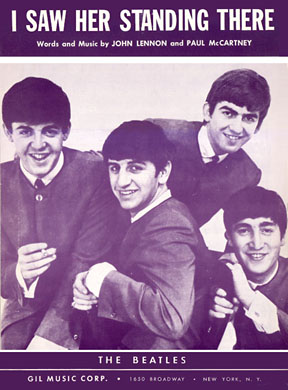 Another difference in the arrangement of the chorus is Paul slipping into a higher vocal part which, in some people's opinions, may be the actual melody. This argument is particularly valid in this case since McCartney is the song's primary composer and his higher vocal melody in the chorus is closer to the range of the verses than John's lower part. Therefore, this may be the exceptional case where Lennon is actually singing a lower harmony to the higher melody, as also heard in "I Saw Her Standing There," for example. Another difference in the arrangement of the chorus is Paul slipping into a higher vocal part which, in some people's opinions, may be the actual melody. This argument is particularly valid in this case since McCartney is the song's primary composer and his higher vocal melody in the chorus is closer to the range of the verses than John's lower part. Therefore, this may be the exceptional case where Lennon is actually singing a lower harmony to the higher melody, as also heard in "I Saw Her Standing There," for example.
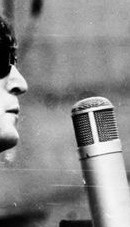 The mood abruptly changes when the second set of verses begins, taking us back to the exact subdued arrangement heard at the beginning of the song. Ringo drops back to just playing on his bass drum while George's acoustic guitar dominates. John and Paul also go back to singing in unison throughout both verses while Ringo adds his snare again in the second verse of this set. At the end of the repeat of the chorus that follows, we hear the first ascending bass line that Paul overdubbed which introduces the solo section of the song. The mood abruptly changes when the second set of verses begins, taking us back to the exact subdued arrangement heard at the beginning of the song. Ringo drops back to just playing on his bass drum while George's acoustic guitar dominates. John and Paul also go back to singing in unison throughout both verses while Ringo adds his snare again in the second verse of this set. At the end of the repeat of the chorus that follows, we hear the first ascending bass line that Paul overdubbed which introduces the solo section of the song.
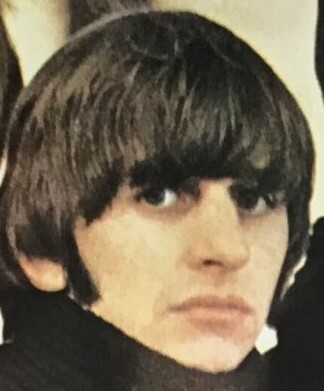 This solo is six measures in length and is identical in chord structure to a single verse, although one distinctive difference in the arrangement is that Ringo maintains his full rock beat as if the solo were just an extension of the chorus. After John repeats the guitar lick we heard in the introduction, Paul plays the ascending bass line one final time. John's lead guitar work follows closely to the vocal melody lines of the verses, right down to the triplet phrases of the third line (although the notes played are different). This solo is six measures in length and is identical in chord structure to a single verse, although one distinctive difference in the arrangement is that Ringo maintains his full rock beat as if the solo were just an extension of the chorus. After John repeats the guitar lick we heard in the introduction, Paul plays the ascending bass line one final time. John's lead guitar work follows closely to the vocal melody lines of the verses, right down to the triplet phrases of the third line (although the notes played are different).
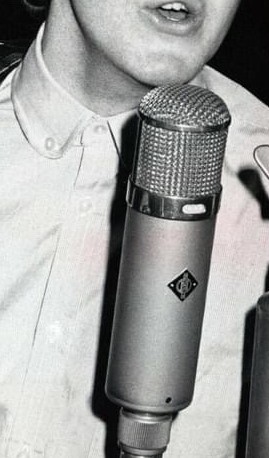 This transitions immediately into a third appearance of the chorus, after which we change moods again for the final touch of the song. This conclusion, being of no determined length because of it fading out, consists of John continuously repeating the overdubbed guitar riff along with John and Paul harmonizing the title of the song in the gaps with a melody line not heard before. Ringo is reduced to just the bass drum again while Paul thumps out an overdubbed bass pattern to add a distinctive element. Possibly as a fortunate accident, John mis-fingers the final note on the third repeat of the guitar riff. By the time the seventh measure of this conclusion is done, the song has successfully faded out, leaving us with a memorable closing gesture ringing in our ears. This transitions immediately into a third appearance of the chorus, after which we change moods again for the final touch of the song. This conclusion, being of no determined length because of it fading out, consists of John continuously repeating the overdubbed guitar riff along with John and Paul harmonizing the title of the song in the gaps with a melody line not heard before. Ringo is reduced to just the bass drum again while Paul thumps out an overdubbed bass pattern to add a distinctive element. Possibly as a fortunate accident, John mis-fingers the final note on the third repeat of the guitar riff. By the time the seventh measure of this conclusion is done, the song has successfully faded out, leaving us with a memorable closing gesture ringing in our ears.
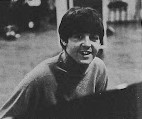 Paul proves himself to be quite busy in this song, his bass work being intricate where necessary and high enough in the mix to be noticed. In fact, his periodic bass overdubs mark the first time we actually hear two bass parts played simultaneously in a Beatles song, which is something that becomes more common in later years. While his bass notes on the piano are hardly of the caliber of Liberace, they are just what is needed to create the desired effect. And, needless to say, his vocal work is spot on pitch. Paul proves himself to be quite busy in this song, his bass work being intricate where necessary and high enough in the mix to be noticed. In fact, his periodic bass overdubs mark the first time we actually hear two bass parts played simultaneously in a Beatles song, which is something that becomes more common in later years. While his bass notes on the piano are hardly of the caliber of Liberace, they are just what is needed to create the desired effect. And, needless to say, his vocal work is spot on pitch.
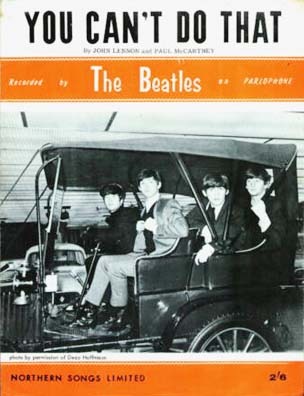 John's role as lead guitarist, using his custom Rickenbacker 12-string for the only time on a Beatles song, is a role he happily jumped into whenever he felt confident enough. While he displays his lead guitar chops better elsewhere (on "You Can't Do That" for instance), he admirably does the job here. His vocal work is to be commended also, especially his lower harmonies in the chorus. John's role as lead guitarist, using his custom Rickenbacker 12-string for the only time on a Beatles song, is a role he happily jumped into whenever he felt confident enough. While he displays his lead guitar chops better elsewhere (on "You Can't Do That" for instance), he admirably does the job here. His vocal work is to be commended also, especially his lower harmonies in the chorus.
 George's acoustic rhythm guitar role was performed well, this element becoming the distinctive feature of the verses. Ringo, as usual, can always be counted on to comply with suggestions made to spice up the arrangement, as evidenced by his eliminating certain components of his drum kit during the verses and conclusion as well as pounding on a timpani when asked. George's acoustic rhythm guitar role was performed well, this element becoming the distinctive feature of the verses. Ringo, as usual, can always be counted on to comply with suggestions made to spice up the arrangement, as evidenced by his eliminating certain components of his drum kit during the verses and conclusion as well as pounding on a timpani when asked.
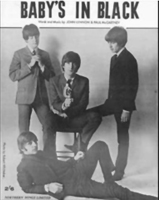 The lyrics of "Every Little Thing" can be described as "politically incorrect" by some, evidenced by the thought that all of the woman's actions are meant to please the man with no mention of the man's intention of returning the favors. While this depiction is carried in the main phrase of the song, namely "every little thing she does, she does for me," the rest of the lyrics don't tread on that same ground. Instead, the lyrics as a whole mostly reveal the standard ingredients of a romantic pop song of the time. The singer is just a "lucky guy" to be "walking beside her." The lyrics may be somewhat pedestrian in comparison to recent Lennon / McCartney offerings, such as "I'm A Loser" and "Baby's In Black," but the emotional impact of the song comes across as sincere. The lyrics of "Every Little Thing" can be described as "politically incorrect" by some, evidenced by the thought that all of the woman's actions are meant to please the man with no mention of the man's intention of returning the favors. While this depiction is carried in the main phrase of the song, namely "every little thing she does, she does for me," the rest of the lyrics don't tread on that same ground. Instead, the lyrics as a whole mostly reveal the standard ingredients of a romantic pop song of the time. The singer is just a "lucky guy" to be "walking beside her." The lyrics may be somewhat pedestrian in comparison to recent Lennon / McCartney offerings, such as "I'm A Loser" and "Baby's In Black," but the emotional impact of the song comes across as sincere.
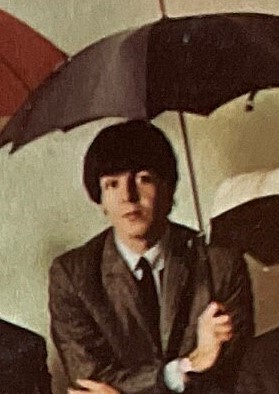 The words do seem to wander a little, especially with the line the starts "I remember the first time..." You would assume the next phrase would continue the thought with "...we kissed" or "...we met." Instead McCartney goes in another direction with "...I was lonely without her." Then, instead of elaborating on this new thought, he regresses back to his previous one with the line "can't stop thinking about her now." While this is a curious diversion, I guess we have to chalk this up to being just a "pop song" anyway. The words do seem to wander a little, especially with the line the starts "I remember the first time..." You would assume the next phrase would continue the thought with "...we kissed" or "...we met." Instead McCartney goes in another direction with "...I was lonely without her." Then, instead of elaborating on this new thought, he regresses back to his previous one with the line "can't stop thinking about her now." While this is a curious diversion, I guess we have to chalk this up to being just a "pop song" anyway.
American Releases
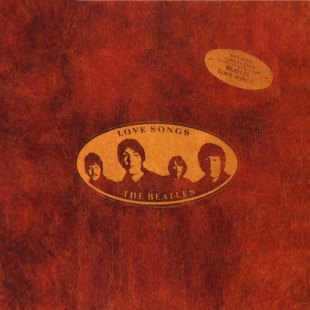 Although the song was released in Britain in December of 1964, US audiences had to wait until June 14th, 1965 to hear "Every Little Thing." This was the release date of the Capitol album "Beatles VI," which concluded side two with the song. This album was then released on compact disc on January 21st, 2014, both the mono and stereo versions of the album contained on one CD. Although the song was released in Britain in December of 1964, US audiences had to wait until June 14th, 1965 to hear "Every Little Thing." This was the release date of the Capitol album "Beatles VI," which concluded side two with the song. This album was then released on compact disc on January 21st, 2014, both the mono and stereo versions of the album contained on one CD.
The song was also included on Capitol's fourth double-album compilation of the '70s, namely "Love Songs," which was released on October 21st, 1977. Paul's sentimental lyrics fit quite well in this collection, which ended up being rather McCartney heavy over all.
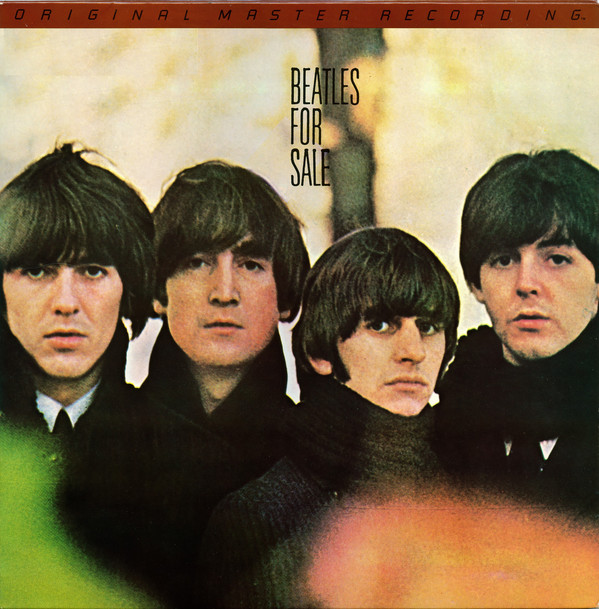 The first time the original British "Beatles For Sale" album was made available in the US was the "Original Master Recording" vinyl edition released through Mobile Fidelity Sound Lab in February of 1987. This album included "Every Little Thing" and was prepared utilizing half-speed mastering technology from the original master tape on loan from EMI. This version of the album was only available for a short time and is quite collectible today. The first time the original British "Beatles For Sale" album was made available in the US was the "Original Master Recording" vinyl edition released through Mobile Fidelity Sound Lab in February of 1987. This album included "Every Little Thing" and was prepared utilizing half-speed mastering technology from the original master tape on loan from EMI. This version of the album was only available for a short time and is quite collectible today.
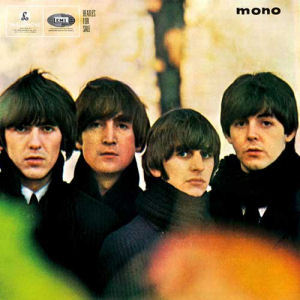 February 26th, 1987 saw the official American release of the "Beatles For Sale" album on compact disc, which included "Every Little Thing" as the eleventh track. A vinyl release of this album was also made available on July 21st, 1987. These releases were in mono only at the time, but were remastered in stereo for their September 9th, 2009 re-release on CD and on November 13th, 2012 on vinyl. The mono version of this album can also be found in the remastered box set "The Beatles In Mono," which was also released on September 9th, 2009 on CD and then on vinyl on September 9th, 2014. February 26th, 1987 saw the official American release of the "Beatles For Sale" album on compact disc, which included "Every Little Thing" as the eleventh track. A vinyl release of this album was also made available on July 21st, 1987. These releases were in mono only at the time, but were remastered in stereo for their September 9th, 2009 re-release on CD and on November 13th, 2012 on vinyl. The mono version of this album can also be found in the remastered box set "The Beatles In Mono," which was also released on September 9th, 2009 on CD and then on vinyl on September 9th, 2014.
As mentioned earlier, a small snippet of the song can be heard on the "Fly On The Wall" disc included in the "Let It Be...Naked" album, which was released on November 17th, 2003.
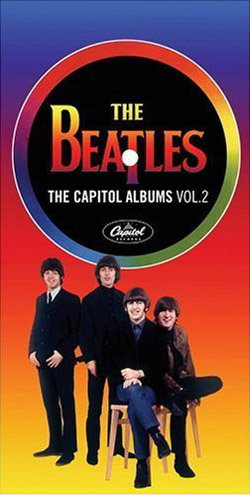 On April 11th, 2006, Capitol released their second box set entitled "The Capitol Albums, Vol 2," which included all four Beatles albums the label released in 1965. Therefore, the entire "Beatles VI" album, featuring "Every Little Thing," was contained in the original stereo and mono mixes as heard in the '60s. For initial pressings of this set, Capitol mistakenly presented a "mono type-B" fold-down mono mix for the entire "Beatles VI" album, which was a method that combined both the left and right channels of the stereo mix to create a mono mix. Therefore, the mono mix of "Every Little Thing" in this set was initially prepared in this way, the error being corrected in subsequent pressings. On April 11th, 2006, Capitol released their second box set entitled "The Capitol Albums, Vol 2," which included all four Beatles albums the label released in 1965. Therefore, the entire "Beatles VI" album, featuring "Every Little Thing," was contained in the original stereo and mono mixes as heard in the '60s. For initial pressings of this set, Capitol mistakenly presented a "mono type-B" fold-down mono mix for the entire "Beatles VI" album, which was a method that combined both the left and right channels of the stereo mix to create a mono mix. Therefore, the mono mix of "Every Little Thing" in this set was initially prepared in this way, the error being corrected in subsequent pressings.
In promotion of the 2014 box set "The US Albums," a 25-song sampler CD was manufactured for limited release on January 21st, 2014, this containing the mono mix of "Every Little Thing."
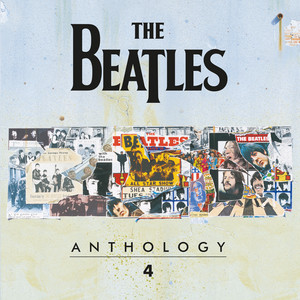 On November 21st, 2025, "Anthology 4" was released on both CD and vinyl, this album also being available within the "Anthology Collection" box set on CD and on vinyl. "Take six" and "take seven" of "Every Little Thing" as recorded at EMI Studio Two on September 30th, 1964, was included on this release." On November 21st, 2025, "Anthology 4" was released on both CD and vinyl, this album also being available within the "Anthology Collection" box set on CD and on vinyl. "Take six" and "take seven" of "Every Little Thing" as recorded at EMI Studio Two on September 30th, 1964, was included on this release."
Live Performances
Since any consideration of this song being a single was dropped very early on, The Beatles gave no thought to performing it live, either on stage, on television, or on BBC radio. Nor has Paul or any other Beatles thought to perform it solo.
 The back cover of Capitol's "Beatles VI" album
|
Conclusion
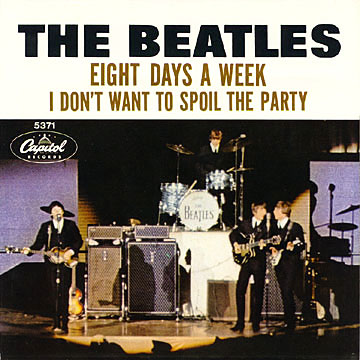 It's quite unfortunate that such a direct but haunting love song should be buried in the track listing of the albums that contain it. The emotional beauty of "Every Little Thing" stands out only after one takes notice of it. In America, the excitement of "Dizzy Miss Lizzy" left everything after it sounding mundane (as far as teen audiences were concerned). And in Britain, the pop masterpiece "Eight Days A Week" left everything heard after it sound somewhat shallow. But heard on its own, and to a maturing Beatles fan, we realize that there was a lot more forethought and ingenuity packed into this two-minute exercise than we originally thought. It's quite unfortunate that such a direct but haunting love song should be buried in the track listing of the albums that contain it. The emotional beauty of "Every Little Thing" stands out only after one takes notice of it. In America, the excitement of "Dizzy Miss Lizzy" left everything after it sounding mundane (as far as teen audiences were concerned). And in Britain, the pop masterpiece "Eight Days A Week" left everything heard after it sound somewhat shallow. But heard on its own, and to a maturing Beatles fan, we realize that there was a lot more forethought and ingenuity packed into this two-minute exercise than we originally thought.
Song Summary
"Every Little Thing"
Written by: John Lennon / Paul McCartney
Instrumentation (most likely):
- Paul McCartney - Vocals, Bass Guitar (1963 Hofner 500/1), Piano (1905 Steinway Vertegrand upright)
- John Lennon - Vocals, Lead Guitar (1964 Rickenbacker 325-12)
- George Harrison - Rhythm Guitar (1962 Gibson J-160E)
- Ringo Starr - Drums (1964 Ludwig Super Classic Black Oyster Pearl), Timpani
Written and compiled by Dave Rybaczewski
|
IF YOU WOULD LIKE TO MAKE A DONATION TO KEEP THIS WEBSITE UP AND RUNNING, PLEASE CLICK BELOW!
|